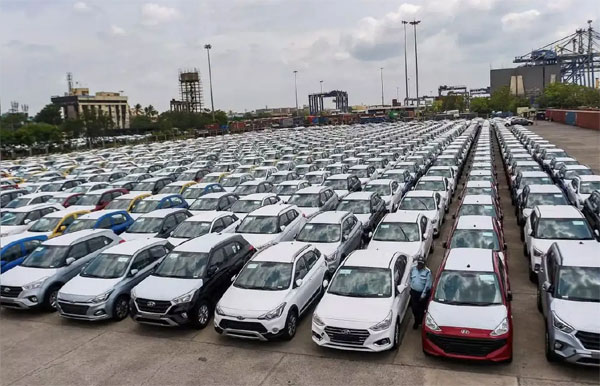Daijiworld Media Network - New Delhi
New Delhi, Aug 30: India’s auto market kicked off the fiscal year with robust numbers, clocking over 10.12 lakh passenger vehicle sales in the April–June quarter, according to fresh data released by the Society of Indian Automobile Manufacturers (SIAM). Maharashtra led the sales chart, reaffirming its position as the country's top automobile-consuming state.
The western region dominated overall sales with 3.21 lakh passenger vehicles sold in Q1, with Maharashtra alone accounting for 1.19 lakh units. Other high-performing states included Uttar Pradesh, Gujarat, Karnataka, and Haryana.
The two-wheeler segment saw even greater volume, with a whopping 46.75 lakh units sold during the period. Western states again drove a significant share, contributing 14.19 lakh units. Uttar Pradesh emerged as the leader in this segment with 8.18 lakh two-wheelers sold, followed closely by Maharashtra, Tamil Nadu, Bihar, and Madhya Pradesh.

Maharashtra also topped the commercial vehicle sales with 32,000 units sold out of the total 2.23 lakh vehicles dispatched nationwide in the quarter. The three-wheeler category reported 1.65 lakh units in total, with Uttar Pradesh again leading with 21,000 units sold, trailed by Maharashtra, Gujarat, Karnataka, and Telangana.
However, July 2025 saw a slight dip in passenger vehicle dispatches from manufacturers to dealerships, with figures easing to 3,40,772 units from 3,41,510 units in July 2024 — a marginal decline that industry experts attribute to seasonal slowdowns and cautious dealer stocking.
In a move that could further energise sales ahead of the festive season, the Central Government is reportedly planning to slash the Goods and Services Tax (GST) on entry-level passenger vehicles and two-wheelers from the current 28% to 18%. This proposed cut, expected as part of broader GST reforms, could significantly lower prices in the affordable segment, especially in the run-up to Diwali.
Currently, all combustion engine vehicles are taxed at a base GST rate of 28%, with an additional compensation cess ranging from 1% to 22%, depending on vehicle specifications such as engine size and body type.
As the festive season approaches and with tax reforms potentially on the horizon, the Indian auto sector looks poised for a strong second quarter — bolstered by healthy state-level demand and growing consumer interest in both mobility and utility segments.